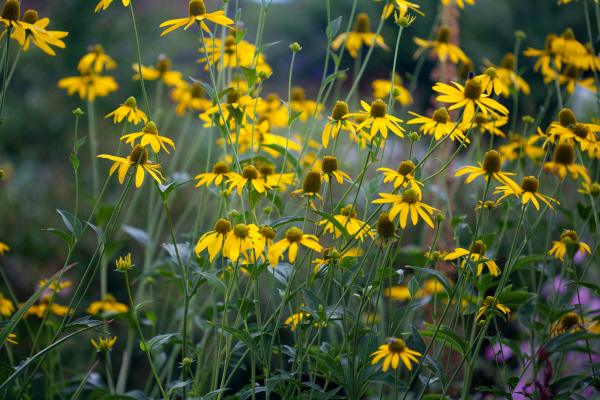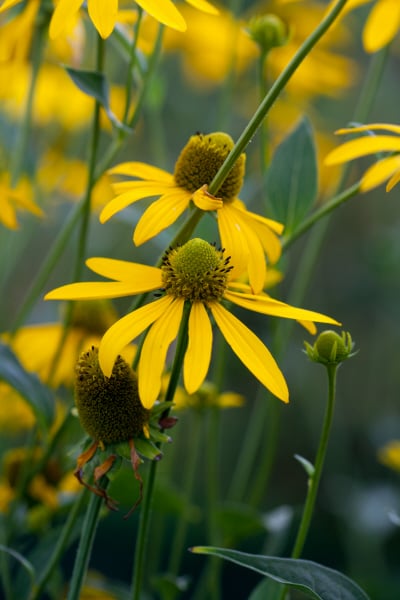Rudbeckia laciniata
cut-leaved coneflower
A rhizomatous perennial that bears yellow daisy-shaped flowerheads in late summer. With central green discs and drooping yellow petals they are held on tall wiry stems above deeply-divided foliage
Size
Ultimate height
1.5–2.5 metresTime to ultimate height
2–5 yearsUltimate spread
1.5–2.5 metresGrowing conditions
Moisture
Moist but well–drainedpH
Acid, Alkaline, NeutralColour & scent
| Stem | Flower | Foliage | Fruit | |
| Spring | Green | |||
|---|---|---|---|---|
| Summer | Green Yellow | Green | ||
| Autumn | ||||
| Winter |
Position
- Full sun
Aspect
South–facing or West–facing or East–facing
Exposure
Sheltered Hardiness
H6Botanical details
- Family
- Asteraceae
- Native to GB / Ireland
- No
- Foliage
- Deciduous
- Habit
- Columnar upright
- Genus
Rudbeckia may be annuals, biennials or rhizomatous herbaceous perennials, with simple or pinnately divided leaves and large daisy-like flower-heads with yellow or orange rays surrounding a prominent conical disk
- Name status
Correct
- Plant range
- N America
How to grow
Cultivation
Suitable for larger gardens. Spreading rhizomes means it can have invasive tendencies
Propagation
Divide plants by separating rhizomes in spring or late autumn
Suggested planting locations and garden types
- Cottage and informal garden
- Prairie planting
- Wildflower meadow
- Flower borders and beds
Pruning
Cut back in autumn
Pests
Generally pest-free
Diseases
Generally disease-free
Get involved
The Royal Horticultural Society is the UK’s leading gardening charity. We aim to enrich everyone’s life through plants, and make the UK a greener and more beautiful place.

